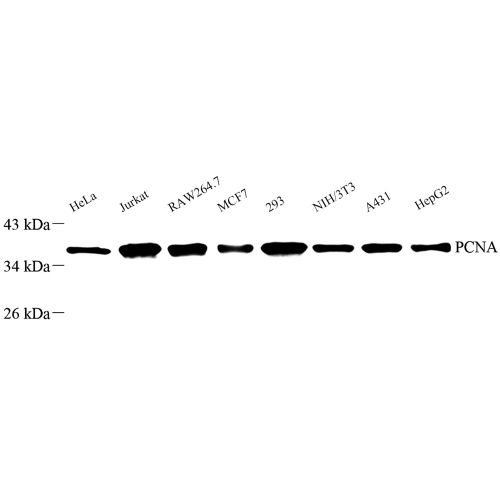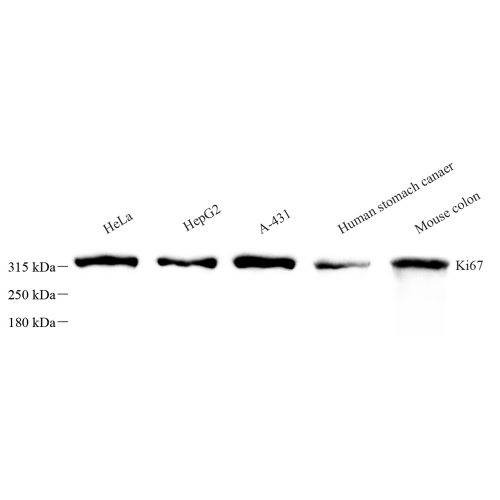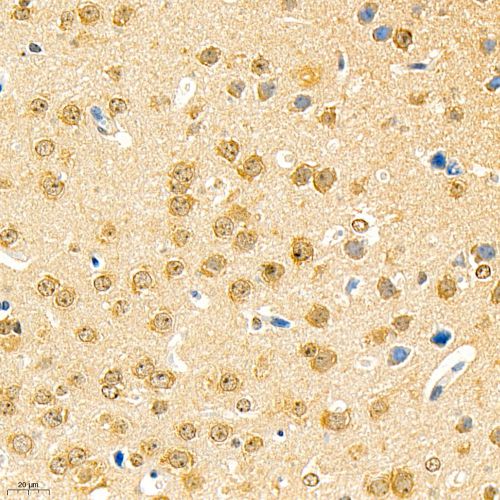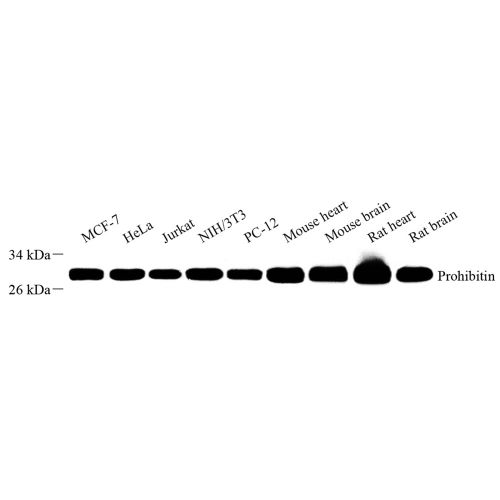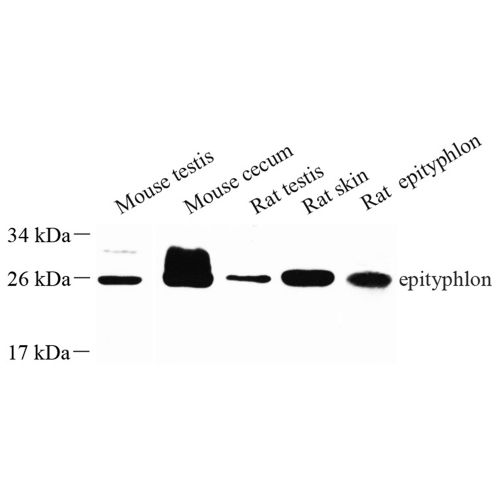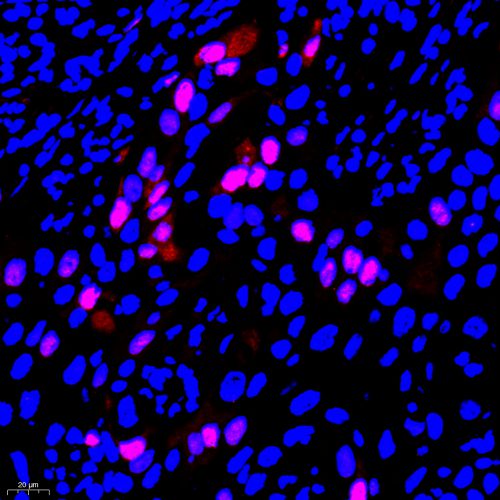服務(wù)熱線
400-1016-218


全國(guó)統(tǒng)一服務(wù)熱線
400-1016-218
科研好幫手 專業(yè)生產(chǎn)商
本公司產(chǎn)品僅供科研使用
您現(xiàn)在所在位置:主頁(yè) > 產(chǎn)品中心 > 抗體 >>一抗 >>細(xì)胞周期 >> Anti -Cyclin E1 Rabbit pAb
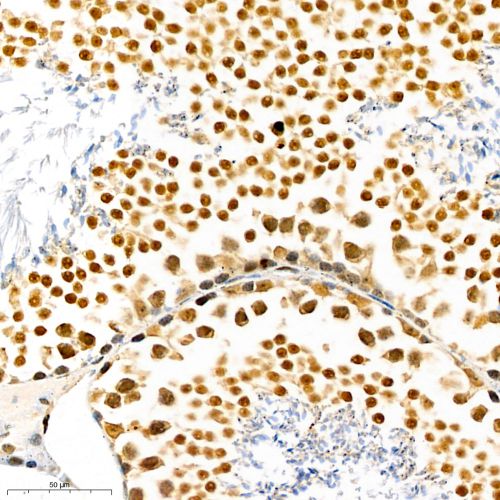

Product Information
|
Description |
Cyclin E1 rabbit polyclonal |
|
Protein full name |
G1/S-specific cyclin-E1 |
|
Synonyms |
CCNE1, CCNE, pcyclin E1, Cyclin E1 |
|
Immunogen |
KLH conjugated Synthetic peptide corresponding to Mouse Cyclin E1 |
|
Isotype |
IgG |
|
Purity |
Affinity purification |
|
Subcellular location |
|
|
Predicted MW. |
47 kDa |
|
Observed MW. |
47 kDa |
|
Uniprot ID |
Applications
|
Applications |
Species |
Dilution |
Positive Tissue |
|
WB |
Human, Mouse, Rat |
1: 200-1: 400 |
testis, colon, placenta |
|
IHC |
Human, Mouse, Rat |
1: 100-1: 400 |
placenta, colon, testis |
Background
The protein encoded by this gene belongs to the highly conserved cyclin family, whose members are characterized by a dramatic periodicity in protein abundance through the cell cycle. Cyclins function as regulators of CDK kinases. Different cyclins exhibit distinct expression and degradation patterns which contribute to the temporal coordination of each mitotic event. This cyclin forms a complex with and functions as a regulatory subunit of CDK2, whose activity is required for cell cycle G1/S transition. This protein accumulates at the G1-S phase boundary and is degraded as cells progress through S phase. Overexpression of this gene has been observed in many tumors, which results in chromosome instability, and thus may contribute to tumorigenesis.
Images
|
|
Western blot analysis of Cyclin E1 (GB111936) at dilution of 1: 400 Lane 1: HeLa cell lysate Lane 2: MCF7 cell lysate Lane 3: K562 cell lysate Lane 4: Mouse testis tissue lysate Lane 5: Mouse colon tissue lysate Lane 6: Rat testis tissue lysate Lane 7: Rat placenta tissue lysate |
|
|
Immunohistochemical analysis of hyperbaric repair of paraffin-embedded human placenta using Cyclin E1 (GB111936) at dilution of 1: 200 |
|
|
Immunohistochemical analysis of hyperbaric repair of paraffin-embedded human colon using Cyclin E1(GB111936) at dilution of 1: 200 |
|
|
Immunohistochemical analysis of hyperbaric repair of paraffin-embedded mouse testis using Cyclin E1(GB111936) at dilution of 1: 200 |
Storage
| Storage | Store at -20 ℃ for one year. Avoid repeated freeze/thaw cycles. |
| Storage Buffer | PBS with 0.02%sodium azide,100 μg/ml BSA and 50% glycerol. |
NOTE:
1.This product is intended for research only.
2.This product is recommended to dilute with the Primary Antibody Dilution Buffer .
合肥萬(wàn)物生物科技有限公司
客服熱線:400-1016-218
QQ:355185756
地址:安徽省合肥市高新區(qū)黃山路602號(hào)合肥國(guó)家大學(xué)科技園A401室



 關(guān)注微信公眾號(hào)
關(guān)注微信公眾號(hào)




